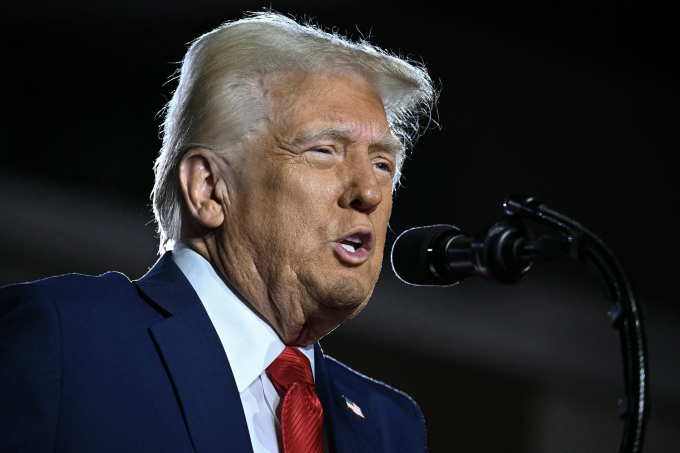
President Donald Trump’s mass firings of federal officials could soon face legal challenges, potentially reshaping the limits of presidential power. If the courts side with the White House, the ruling could significantly expand executive authority.
In less than two weeks since taking office, Trump has dismissed dozens of federal officials, including agency inspectors general, independent commission members, and Justice Department prosecutors.
Some of these firings may have violated federal law, increasing the likelihood of legal battles.
But sources suggest Trump’s legal team is ready for this fight. The risk of court rulings reversing his decisions is real—but if the courts uphold them, the president’s control over the executive branch would grow substantially.
"On one hand, these actions seem to ‘invite’ legal challenges by directly violating federal statutes, reinforcing the message that executive power is unrestricted," said Jack Goldsmith, a Harvard Law professor and former head of the Justice Department’s Office of Legal Counsel under President George W. Bush, in an interview with The New York Times.
"But at the same time, it's clear they are setting legal precedents for a constitutional test," he added.
Expanding Presidential Authority
Since the start of his second term, Trump has taken aggressive steps to assert his authority, particularly through mass terminations of federal employees.
Some of these dismissals appear to conflict with existing laws.
For instance, federal law requires the president to notify Congress in writing at least 30 days in advance before removing agency inspectors general, providing a detailed explanation of the decision.
Yet, on January 24, Trump abruptly fired 17 inspectors general without prior notice.
Several of them are now considering legal action. If they do sue, it could lead to a landmark court case where Trump’s lawyers may argue that the congressional notification requirement is unconstitutional.
In addition to inspectors general, Trump removed officials from multiple independent agencies, including Gwynne Wilcox, a member of the National Labor Relations Board (NLRB).
Wilcox is reportedly preparing a lawsuit against Trump, arguing that the NLRB was established as an independent entity, meaning the president cannot unilaterally fire its members.
According to the National Labor Relations Act, board members can only be dismissed for cause—such as neglect of duty or misconduct—and only after a hearing.
Wilcox was not given a hearing and faced no misconduct allegations, setting the stage for a legal showdown over executive power.
Other agencies, like the Privacy and Civil Liberties Oversight Board (PCLOB) and the Equal Employment Opportunity Commission (EEOC), also saw key officials fired.
While their founding laws do not explicitly restrict presidential firings, a longstanding Washington precedent assumes these officials should only be removed for cause.
In 2010, the Supreme Court ruled that Securities and Exchange Commission (SEC) officials were protected from political firings, even though no law explicitly said so.
The Supreme Court’s Role
Of the nine justices on the U.S. Supreme Court, five previously worked as legal advisors in Republican administrations under Ronald Reagan and George W. Bush.
Both Reagan and Bush’s legal teams argued for expanding presidential power, including reducing congressional control over executive agencies.
Reagan’s legal advisors developed a theory that the president should have total control over the executive branch. Under this theory, if Congress establishes independent agencies, it violates the Constitution—because the president should be able to fire any federal official at will.
In recent years, the Supreme Court’s conservative majority—led by Chief Justice John Roberts, a former Reagan White House lawyer—has embraced this philosophy.
In 2020, the court ruled that a law preventing the president from firing the head of the Consumer Financial Protection Bureau (CFPB) was unconstitutional, reinforcing Trump’s power to fire agency officials without restriction.
Now, Trump appears to be testing those limits again with his mass terminations.
Targeting Career Civil Servants and Justice Department Prosecutors
Trump’s latest executive order makes it easier to fire senior career officials, clearing the way for their replacement by political appointees loyal to the president.
The administration has also removed federal prosecutors who were involved in investigations into Trump’s alleged incitement of the January 6 Capitol riot and mishandling of classified documents.
Acting Attorney General James McHenry defended the move, citing Trump’s constitutional authority and arguing that those fired have the right to appeal.
If these prosecutors challenge their dismissals in court, it will create another constitutional test for the balance of power between Congress and the president.
"We’re about to find out exactly where Chief Justice Roberts stands on executive power," said Professor Goldsmith.
Hello Shuttle will strive to bring the latest updates. At the end of the day.
Are you looking for reliable airport and cruise port transfer services in Los Angeles?
We offer professional, safe, and punctual transportation from
Los Angeles Airport - LAX
Long Beach Airport - LGB
John Wayne Airport - SNA
San Pedro cruise port
Long Beach cruise port
Disneyland
and other destinations.
Let us make your journey stress-free and comfortable with our dedicated drivers and high-quality vehicles. Book now for the perfect travel experience at www.helloshuttle.com or call 944-800-5678!


